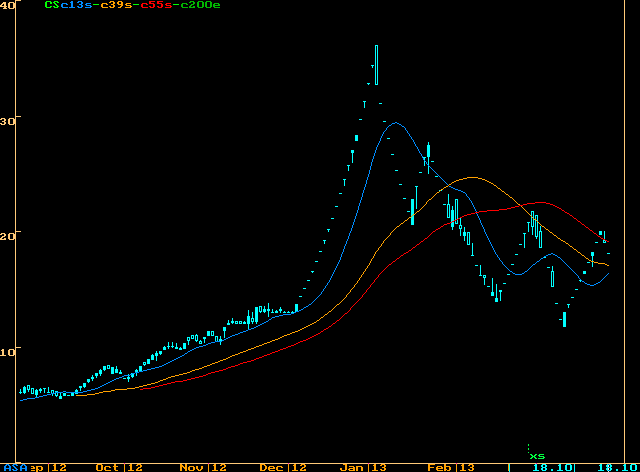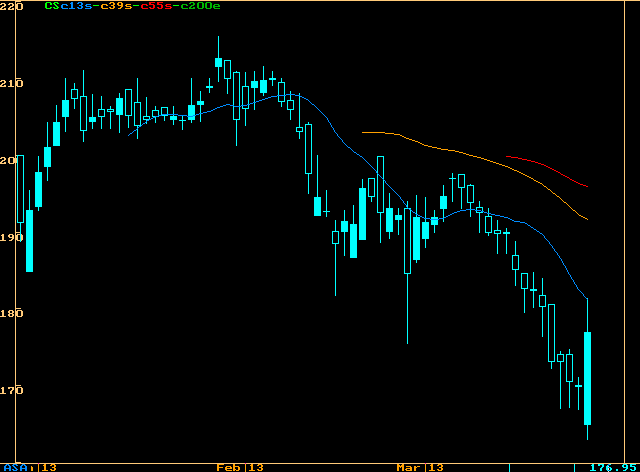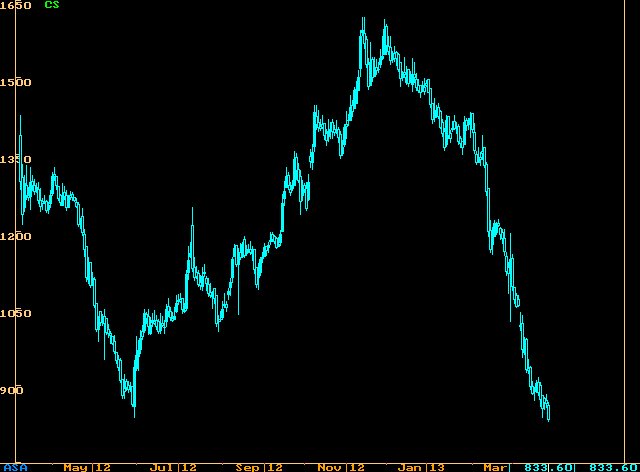Hero is VKS Projects which is best not talked about
The financial year 2012-13 was a tough one for the economy and the markets. Though the BSESENSEX gained 1,431.57 points or 8.23% in the year to close at 18,835.77 points, the closing levels do not convey the correct sense of the economy. The NIFTY rose 387 points or 7.31% to close at 5,682.55 points. The primary markets were quite badly affected post the change in listing day procedures and also the regulator passing interim orders on many entities involving promoters, companies and merchant bankers who had come out with issues during 2011. This is of course a very welcome step and has ensured that investors do not lose money. Secondly the FPO or follow on public offer route which used to be popular particularly with the government to carry on its dvestment programme was completely abolished after SEBI introduced an alternate in OFS or Offer for Sale.
The OFS has become extremely popular not only with the government but also with private companies as it is very quick, efficient and virtually cost free. The entire exercise is done with and over in 48 hours. The management or promoter decides to do an OFS, informs the exchange of the decision on day one with the date of the OFS happening. On the eve of the OFS it informs the floor price post market closure and the next day the OFS is completed.
There have been a number of offers which have taken place through this including RCF, NMDC, NTPC, SAIL, Oil India, NALCO from the government and issues like Elantas, Blue Dart, 3M and Adani Enterprises from the private sector to name a few. The scheme is certainly appreciated by all quarters due to it being very quick and cost effective. Retail investors do have a complaint as they have to pay 100% of the amount upfront before making a bid against 0% by QIB’s.
Click here to View complete table.
Coming to the traditional IPO market there were a mere 12 issues in the period March 2012 to February 2013 which were listed on the exchanges. Almost all the issues have made their highs in the month of January 2013 when the markets made their 52 week highs. The SENSEX at that time had touched a level of 20,203 points. The top performing company was a little known company VKS Projects Limited which issued shares at a price of Rs 55. The shares have been subdivided into a face value of Re 1 which effectively reduces the issue price to Rs 5.50 per share. The company has a paid up equity of 18 cr shares of Rs 1 face value which translates into a market cap of Rs 326 crs at the current price of Rs 18.10. To add insult to injury this company has as recently as the 20th of March announced a bonus issue of 2.5 shares for every share held.

From the above chart it is quite clear that the share is not one in which investors would like to put their money. The number of circuits whether upward or downward are not in the interest of shareholders. To make matters worse the market cap for an infra company is substantially higher than even the revenues. The company in the September and December quarters has reported revenues of Rs 66.72 crs and 57.77 crs respectively. This if annualised would translate into a total revenue of Rs 249 crs and a net profit of Rs 6.02 crs translating into an EPS of Rs 0.33 and a PE of about 55 times. It’s quite unfortunate that a company like VKS Projects becomes the hero of 2012-13. Some things just do not change no matter what the regulation.
Coming to the ZERO of the year, the company is BhartiInfratel. It had launched its IPO in December 2012 and listed at virtually the end of the calendar year on 28th of December 2012. The issue was priced at Rs 220 with a discount of Rs 10 for retail investors, who chose to ignore the issue completely. The issue has fared poorly since listing and closed the year at Rs 176.95, down 19.57% for the period but not before making a low of Rs 163 on the last trading day. Probably more carnage is likely in this share.

Readers may also be curious to know what happened when the parent of this company BhartiAirtel listed on the bourses. It took that company over a year to bottom out and another six months or so to come to par before trading at a premium and making money for its shareholders. It’s a matter of conjecture how many investors are willing to see their money erode and continue to hold on to their shares waiting for the turn around and then profits.
The second zero of the year was V-Mart Retail which launched its issue in February 2013 and has been listed for just about 40 days. The issue was priced at Rs 210 which was steep and the share is trading at a discount of 19.36% to its issue price.

The share of the year would clearly go to MCX which made its debut as the first exchange company to be listed. The company had made an offer for sale at Rs 1,032 which was very handsomely oversubscribed. HNI category was oversubscribed 150 times, retail 24 times and even QIB was oversubscribed 49 times, leading to an overall subscription of 54 times. The share has been quite volatile in its one year of listing and has probably been more volatile than the SENSEX and NIFTY. The share made its low on the last trading day in March 2013 at Rs 830.10 and closed at its lowest level of Rs 833.60.

The summary of the 12 issues performance is given below.
1 company gained over 225%
2 companies gained over 90% but less than 98%
2 companies gained over 10% but less than 16%
1 company gained over 5% but less than 10%
1 company gained over 0% but less than 1%
5 companies lost more than 15% but less than 20%
The year 2012-13 has not been very good for the primary market and the same can be seen from the huge drop in number of issues. The reluctance of promoters and merchant bankers in leaving something for the investor on the table has brought about general apathy towards the primary market and this is damaging in the longer term interest of capital raising. One hopes good sense prevails.



